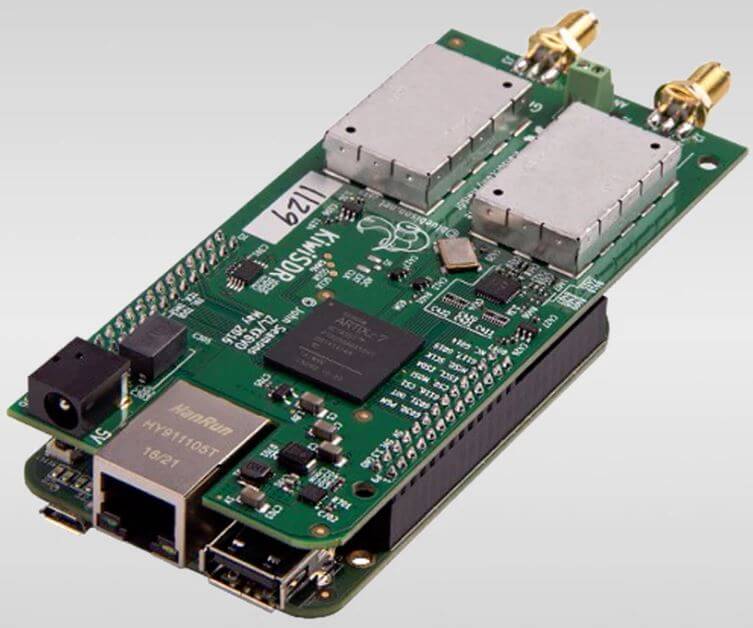Comparing the KiwiSDR Against the RaspberrySDR Clone
The KiwiSDR is a 14-bit wideband RX only HF SDR which has up to 32 MHz of bandwidth, so it can receive the entire 10 kHz - 30 MHz spectrum all at once. Notably, the KiwiSDR does not connect to a PC directly, rather it is a cape (add on board) for the Beaglebone single board computing platform which similar to a Raspberry Pi. With most of the DSP processing done on the KiwiSDR's onboard FPGA, the Beaglebone serves a custom OpenWebRX browser interface which can be accessed over a network connection from anywhere in the world. If you're interested our initial KiwiSDR review from 2017 is here.
Over the years the KiwiSDR has brought some very interesting software developments out such as several new demodulators. However, our favourite is the TDoA feature, which allows users to leverage multiple public KiwiSDRs to locate the source of an HF transmission with remarkable accuracy.
KiwiSDR Clones
This year we've seen a number of cloned SDRs come out on the market, with almost all using LTC2208 ADC chips that have most likely been recycled from discarded equipment. One of those clones is the RaspberrySDR, which is a clone of the KiwiSDR.
The RaspberrySDR is not a direct clone however, as it brings some improvements. The biggest change is that the LTC2208 chip has a 16-bit ADC, and can provide up to 62 MHz of real time bandwidth. Also instead of a Beaglebone single board computer, a Raspberry Pi 3B+ is used instead. At the time of this post the RaspberrySDR retails for roughly $70 less than the KiwiSDR.

Comparison
Over on his blog KA7OEI has written up a comprehensive comparison between the KiwiSDR and RaspberrySDR. KA7OEI notes RaspberrySDR powers up and works with it's full 62 MHz bandwidth as expected. Measurements for sensitivity, dynamic range, image rejection are about the same.
However, there are some issues such as inconsistent RF level calibration, a broken s-meter at high SNR levels, "motorboating" on strong narrowband signals, and a broken firmware update button. Also interestingly, KA7OEI's tests show no improvement to the dynamic range. With two extra bits of ADC resolution on the RaspberrySDR we would have expected an improvement. Most of these issues are probably firmware bugs which could be fixed, but the dynamic range issue could be related to less care taken in the hardware design.
There has also been some discussion over on the WSPRDaemon forums here.
Ethics + Official Future Software Development
As the KiwiSDR source code is open source, it could be considered fair game to fork the code and make use of it in a derivative product. However, at the same time we should remember that the KiwiSDR developers have been working on this code and providing constant updates ever since the release. No funds from the clones will go to them and the success of a clone could spell the end of motivation for future software developments. In addition as KA7OEI notes, the code used on the RaspberrySDR seems to be somewhat obscured, and unlike the KiwiSDR, no open source schematic has been released. Any official long term support of the RaspberrySDR seems unlikely too.
John Seamons (ZL/KF6VO), the leader of the KiwiSDR project has announced that despite the clones KiwiSDR development will remain 100% open source with any future updates also being available to the cloners should they choose to implement them. He also mentioned to us that the clones will also be able to contribute to the TDoA service and can be listed on the KiwiSDR directory. However, the reverse proxy feature will be limited only for official products.
